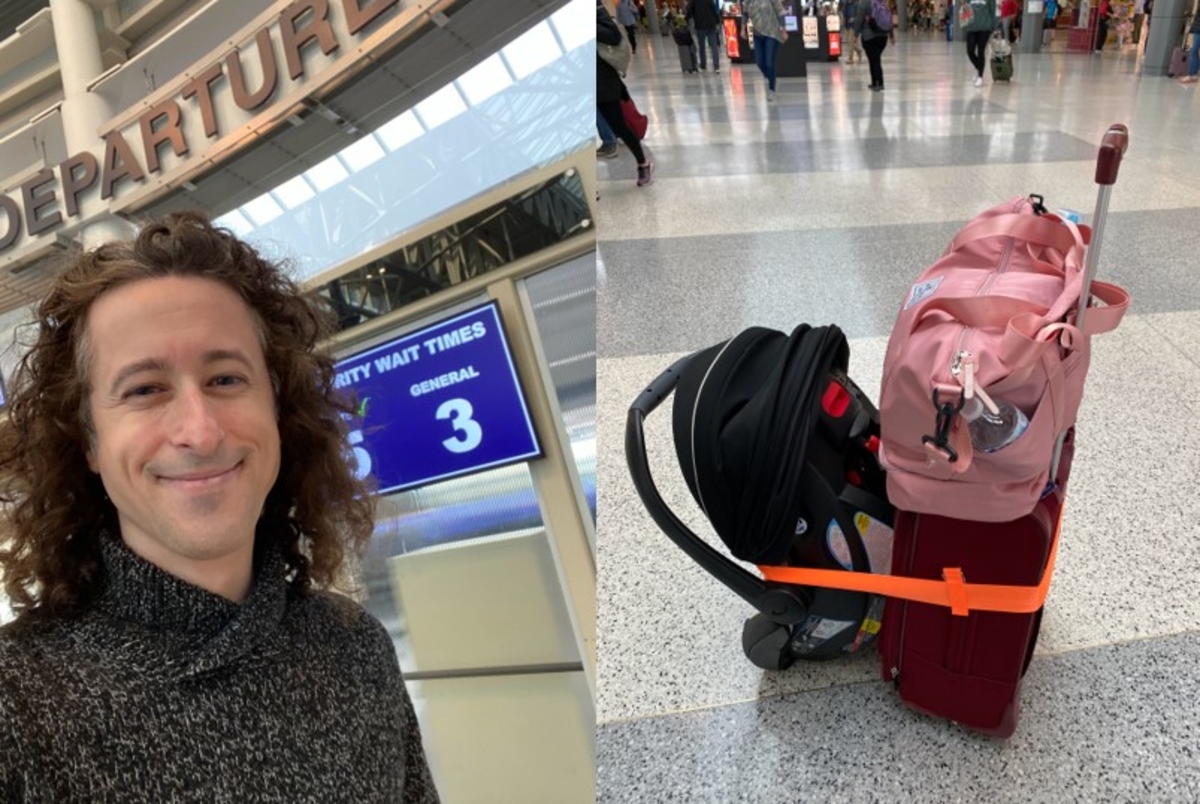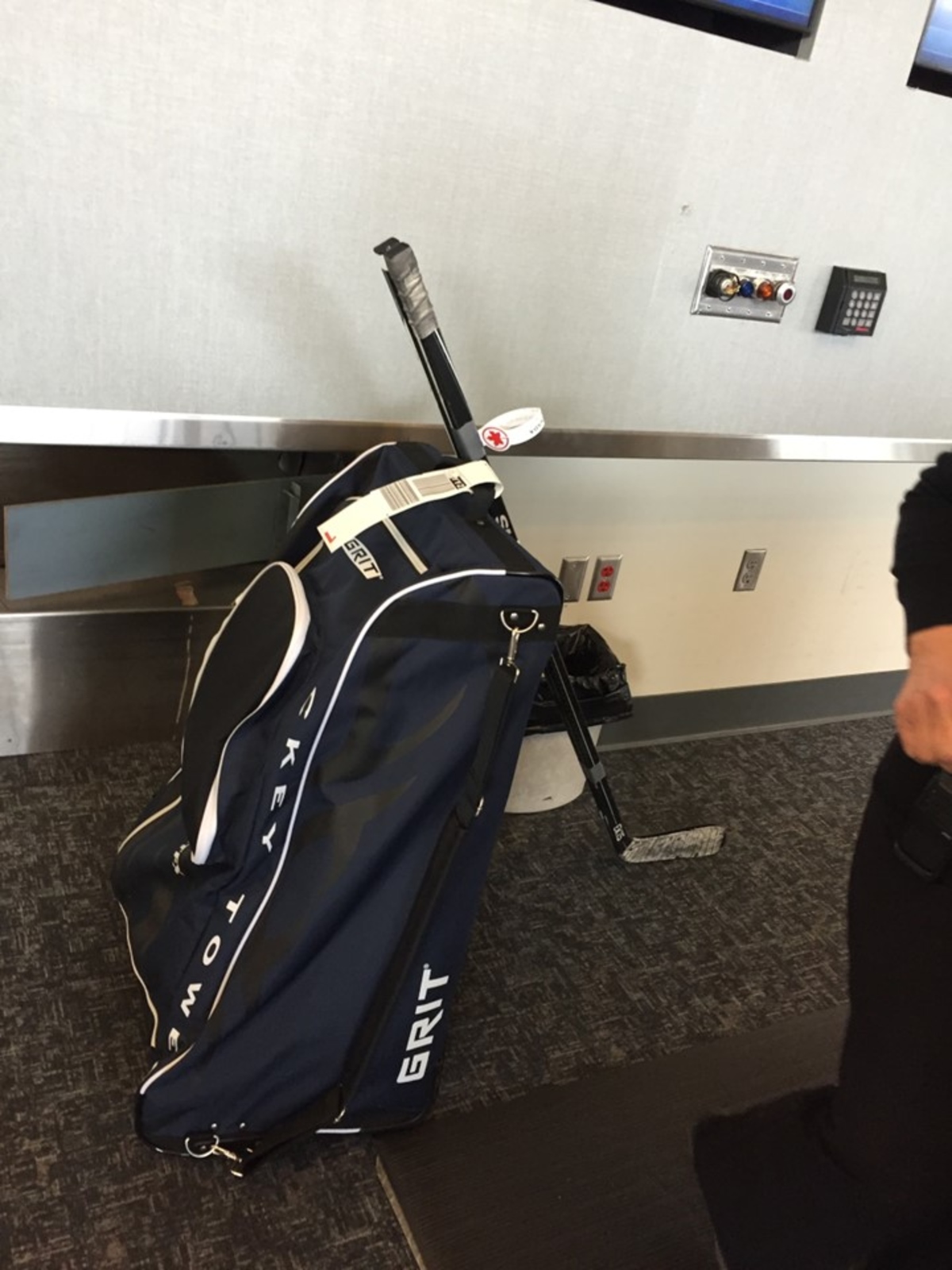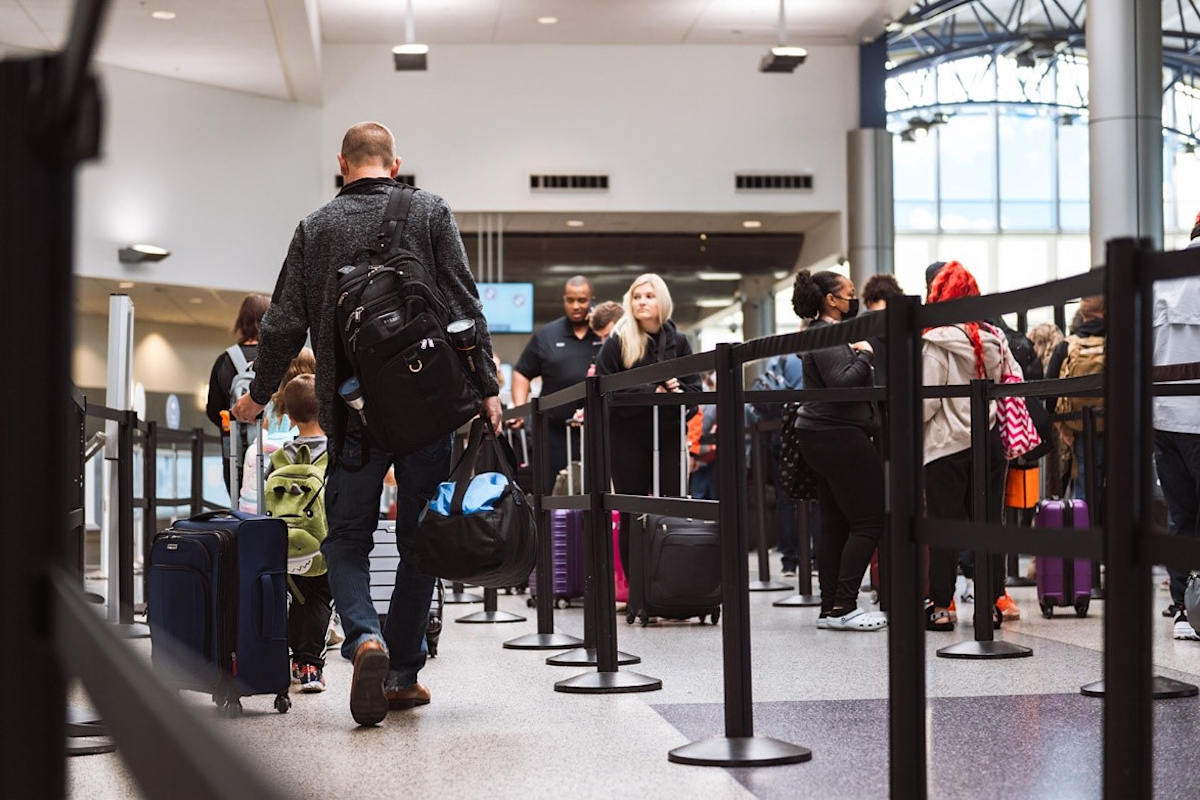Starting April 21, crews will resurface Airport Access Road (KY 212), with single lane closures from 8 pm - 6 am. The O'Hara Road (KY 3147) entrance from Donaldson Highway (KY 236) will also close.
TSA Q&A: How to Get Through Airport Security Faster

You can plan out many things when you fly: where you’ll park, what to pack, and when you’ll arrive at the airport. But one of the biggest variables in air travel that often adds stress is the security checkpoint line.
If you’ve flown recently, you may have noticed that more people are traveling than ever. And you’re correct. In most places, air travel has returned to pre-pandemic levels with some destinations exceeding 2019 passenger numbers.
More passengers = more people to screen at the TSA checkpoint.
The good news: after visiting a lot of airports around the world (I believe 51 was the last count), I’ve found that CVG generally has some of the shortest security wait times of anywhere. But during peak seasons and on peak days, even the most efficient airports get crowded. It had me wondering if there are some things we can do at the TSA checkpoint to help keep the line moving.
So, I reached out to Mark Howell, regional spokesperson for the Transportation Security Administration (TSA).
 (Left: I always appreciate a short three-minute wait! Right: My wife’s brilliant hack for traveling with our baby.)
(Left: I always appreciate a short three-minute wait! Right: My wife’s brilliant hack for traveling with our baby.)
Jay: What’s your best advice for packing bags?
Mark: So, when you’re preparing, when you’re packing for a trip, we recommend that you start with an empty bag. Make sure there is nothing in any of the pockets inside the bag. And then pack from scratch. Make sure that everything you’re putting in there is allowed to go in a carry-on bag or checked bag if you plan to check luggage. Doing that is going to save you time at the security checkpoint and really, I think that’s what everybody wants—to keep those lines moving quickly.
So, speaking of the security checkpoint, how early should somebody show up during the busy seasons, such as Labor Day weekend or around Independence Day?
During the holidays, we recommend that passengers get to the airport at least two hours before their scheduled departure time. But if you’re traveling in what we call the “rush hours” of the early morning and late afternoon, you may want to build in a little bit of additional time on top of that, maybe another 1/2 hour early to make sure that you’ve got enough time to get through the process. Remember: when the airport is processing a lot of passengers on those days and in those times, everything can take a bit more time: finding a parking spot, checking in with your airline, and getting through the security screening process.
Now, when you’re going through security at the checkpoint and bringing carry-on bag with you, some items have to go in a carry-on and some have to be checked, right?
Yes, there are a lot of items that you can’t bring in a carry-on bag but are perfectly OK for checked luggage. If you have questions about specific items, what is and what isn’t allowed, we have some great resources on our website and our MyTSA app. It’s the “Can I Bring My…” tool. You can type in different items, and it’ll tell you whether or not you can take them in a carry-on bag, if they need to go in a checked bag, or if they’re not allowed on an aircraft at all. It’s a great resource.
We’re also on social media. If you want to reach out to us on Facebook Messenger or Twitter (X) at @askTSA, we’ll have a representative answer your questions on the specific items you have.
Speaking of social media, I love the TSA’s Instagram. I don’t know that most people would say “Oh, I love this government agency's social media!” But there are some hilarious posts, especially on the things that people try to bring through the checkpoint. Are there any weird items that stand out, like a hall of fame of crazy things people try to bring?
First off, I’ll give some kudos to our social media team. They’re trying to find that blend of educating passengers while inserting some humor. I think they do a great job with that.
I love to say that we see “everything and the kitchen sink.” The reason I say that is that we once had somebody try to bring a copper kitchen sink through a checkpoint. We also had someone try to bring a four-foot electric weedwhacker through a checkpoint. The passenger had brought it to the ticket document checker with a strap on and across his back. The ticket document checker said, “you can’t take that; you’re going to have to go back and check it.” The passenger didn’t want to leave to go check it, so he left it with the officer. It would’ve been fine if they decided to check it and pay for it, but obviously you can’t bring your weedwhacker on board an aircraft.
The most common things that we see any time of the year—but really as we go into the holidays—are oversized liquids. Things that are more than 3.4 ounces must be checked. Pocket knives, self-defense items, and things like power tools are what we see a lot of.
Are there still rules when it comes to liquids on board?
There are. The 3-1-1 rule remains in effect. You may only have liquids of 3.4 ounces or less in a quart-size bag, and each passenger is allowed one. So, it comes out to “3-1-1.” The only exception to this is any medically-necessary liquid. If you have those type of liquids more than 3.4 ounces, you may bring those through the security checkpoint. However, they will be subject to additional screening; those are things like liquid medication, if you need insulin, if you’ve got breast milk, or anything that’s medically necessary of that sort.
You mentioned food for babies, but what about food for grown-ups? Can you bring your home-cooked food with you on a flight? Are there certain foods that you can’t bring along in your carry-on bag?
The simple rule of thumb for food is that if you can pump, spread, pour, or spray it, and it weighs more than 3.4 ounces, then you need to pack it in your checked luggage.
What about bringing along gifts for family and friends?
One tip we give passengers as they travel is that if you are traveling with gifts, don’t wrap them before you travel. We say this because if the item alarms, either at the security checkpoint or in checked luggage, we will have to unwrap it to look before we let it go. So, we recommend using gift bags if you’re traveling with gifts; that way we can look at the item and put it back in the bag. Or just wait until you get to your destination to wrap the item.
What if I want to bring my pet along for my trip? Is that cool?
Absolutely! One of our officers may ask to pet them when you’re coming through the checkpoint, though. Pets are OK for travel, but this varies greatly by airline, so you need to check with your carrier before coming to the airport for the rules of travel with your pets.
Live animals should not be placed in the screening equipment in the checkpoint. This has happened a couple times in the last few years, and we’re really trying to remind passengers not to do that.
When you come to the security checkpoint, you will be asked to remove your animal from its carrier. You will need to hand carry them through the security checkpoint. Officers will then carry out additional screening before you proceed through the airport for your flight.
But please, please, please do not put your animals into X-ray machines.
It’s weird that we have to say that, but we have to say that!
It was right around Thanksgiving a couple of years ago when we found a cat in a checked bag. It was “Smells, The Cat” from New York. If you do a Google search for “Smells, The Cat,” you’ll find the story.
(I did, and here’s the story of Smells!)
 When flying to Toronto with my hockey gear, I made sure to arrive early and check Air Canada’s oversized bag and sports equipment policy.
When flying to Toronto with my hockey gear, I made sure to arrive early and check Air Canada’s oversized bag and sports equipment policy.
When going through the TSA checkpoint, there are times when I have had to take my shoes and belt off but other times when they’ve said, “you can leave your shoes on and go through.” Does this vary by airport or time of year?
At CVG, all screening lanes now use advanced Computed Tomography (CT) machines, meaning you no longer need to remove electronics and liquids from your bag at the security checkpoint. With standard X-ray screening, passengers must take out these items, but CT technology allows you to keep everything in your bag.
When traveling through an airport that uses CT machines, like CVG, you simply place your entire bag on the conveyor belt without having to unpack it. This aims to make the process quicker and more convenient compared to the standard X-ray machines where electronics and liquids had to be removed.
Additionally, if you're a member of TSA’s PreCheck program, you can keep your shoes and light outerwear on during screening, even in airports with standard X-ray machines. There are also exceptions for removing shoes if you are 75 or older or a minor.
 According to the TSA, about 99% of TSA PreCheck passengers wait less than 10 minutes in line.
According to the TSA, about 99% of TSA PreCheck passengers wait less than 10 minutes in line.
Let’s talk more about that. TSA’s PreCheck program seems like a great way to save time and hassle, especially during busy travel times. How do I sign up for the program?
If you or someone you know is a frequent traveler, TSA PreCheck is a wise investment. Once you are approved, it’s valid for five years from the date of enrollment. After acceptance into the program, you can keep your light outerwear, belt, and shoes on when traveling through security checkpoints. Additionally, you can leave your liquids and electronics inside your carry-on baggage. At many airports, including CVG, there is a separate checkpoint lane for TSA PreCheck, which tends to speed up the process since you don’t have to remove those items.
If you’re interested in TSA PreCheck, visit https://www.tsa.gov/precheck to start the pre-enrollment process online. The website provides all the information you need for your in-person interview, including what to bring; of note, CVG has an on-site location for PreCheck enrollment interviews.
It is important to note that, once you’re a PreCheck member, the Trusted Traveler Number (TTN) you are issued must be entered when you book each trip with an airline, so your ticket will identify you as part of this program.
Mark, thank you so much for all these tips as we kick off the summer travel season.
Thank you so much for the opportunity to share more about the TSA and the role we all play in keeping our airports and aircraft moving safely and efficiently.
 A gorgeous morning on a recent trip to Sintra, Portugal
A gorgeous morning on a recent trip to Sintra, Portugal
Do you have a great time or money-saving travel tip? I’d love to hear about it! You can reach me on Facebook, Instagram, and X (Twitter) at @JayKruzOfficial.
-Jay